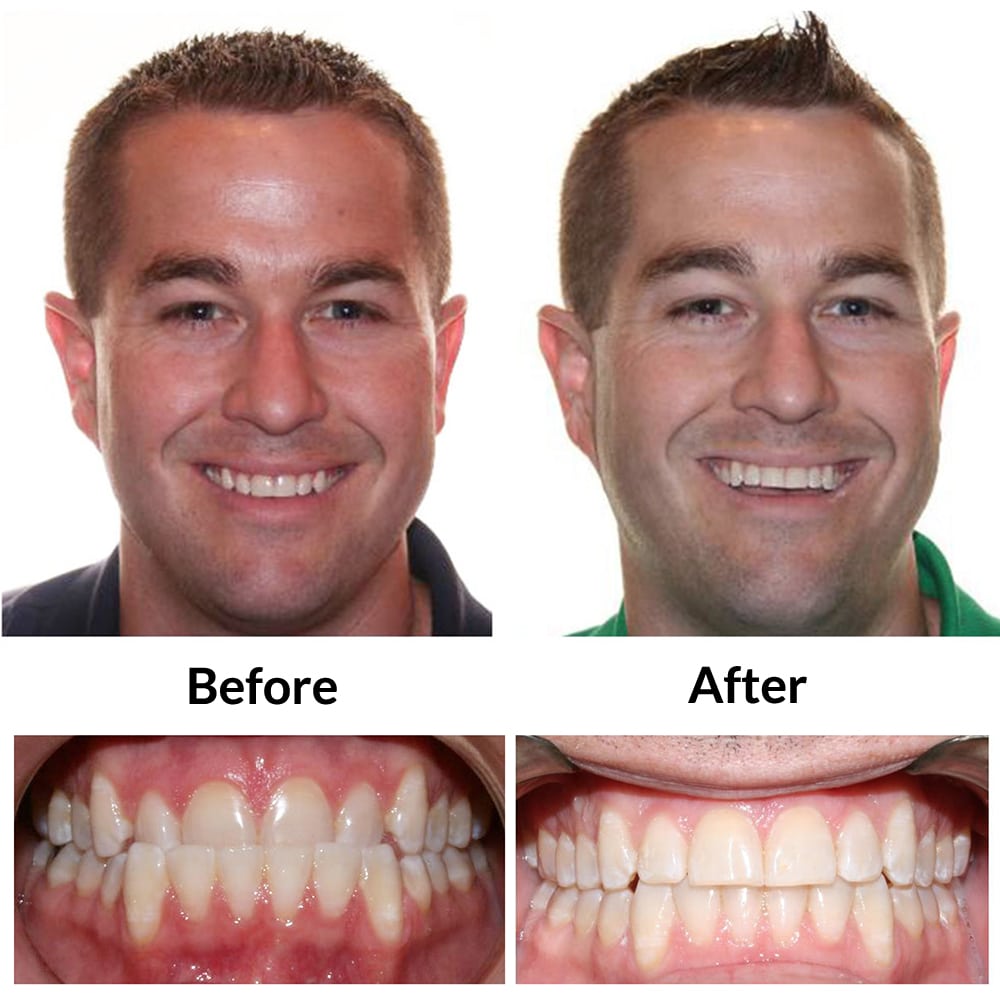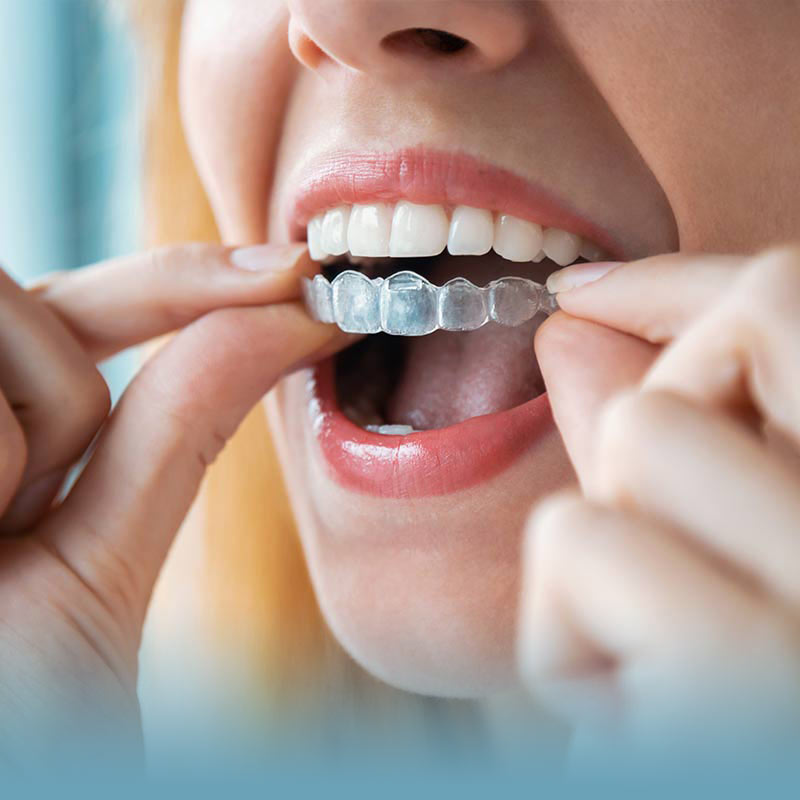Leading Factors to Select Invisalign Over Other Orthodontic Treatments
Leading Factors to Select Invisalign Over Other Orthodontic Treatments
Blog Article
Invisalign vs. Standard Dental braces: Which Alternative Is Right for You?
When considering orthodontic treatment, the option between Invisalign and standard dental braces presents a number of crucial variables that warrant careful assessment. Invisalign uses a discreet option with detachable aligners, while standard dental braces provide a more noticeable yet effective remedy for extreme imbalance. Each alternative incorporates distinctive benefits and downsides connected to aesthetics, comfort, treatment period, and price. Understanding these nuances is important for making a notified choice that aligns with your personal preferences and lifestyle. The inquiry stays: which choice will best satisfy your orthodontic needs and assumptions?
Summary of Therapy Alternatives

On the other hand, conventional dental braces are composed of metal brackets and cables that are bound to the teeth. This approach applies continual stress gradually to attain positioning. While efficient for intricate orthodontic issues, conventional braces call for normal sees for adjustments and can position difficulties in keeping dental hygiene due to the problem of cleaning up about cords and brackets.
Both alternatives have their qualities, and the selection frequently pivots on particular oral conditions, lifestyle preferences, and client compliance. Eventually, seeking advice from an orthodontic specialist is crucial for identifying the most appropriate therapy strategy tailored to specific needs. Comprehending the nuances of each choice can substantially affect the general success of orthodontic treatment.
Aesthetic Factors To Consider
A significant variable affecting the selection in between Invisalign and typical dental braces is the aesthetic allure each therapy offers. Invisalign aligners are crafted from clear plastic, making them practically unnoticeable when worn.
In contrast, typical dental braces include steel brackets and wires, which can be much more recognizable. While innovations in orthodontic innovation have led to the growth of smaller sized brackets and tinted elastics, standard braces still keep a more obvious profile. For some individuals, the presence of braces may hinder them from seeking necessary therapy.
Ultimately, the selection between Invisalign and typical braces might rest on individual choices pertaining to looks. Clients who focus on discretion usually lean towards Invisalign, while those that are much less concerned concerning visibility may choose conventional dental braces. Understanding the aesthetic effects of each option is critical for making a notified choice that aligns with one's lifestyle and preferences.
Convenience and Convenience

In terms of benefit, Invisalign aligners are removable, enabling patients to appreciate their preferred foods without limitation and maintain optimum dental hygiene. Brushing and flossing are simplified, as the aligners can be gotten throughout these regimens, whereas conventional braces call for cautious maneuvering around cables and brackets.
In comparison, traditional dental braces necessitate routine adjustments, making them much less convenient for those with busy schedules. Generally, the convenience and benefit of Invisalign make it an appealing selection for lots of people seeking orthodontic treatment.
Therapy Period and Efficiency
While both Invisalign and typical braces work in dealing with dental misalignments, the period of treatment can differ substantially between both alternatives. Typically, Invisalign therapy can take anywhere from 12 to 18 months, relying on the intricacy of the case. The clear aligners work by gradually changing teeth right into their desired positions, and routine follow-ups with an orthodontist aid make sure progression remains on course.
In comparison, traditional dental braces typically need a longer commitment, generally varying from 18 months to three years. This is because of their fixed nature and using cords and brackets, which can be more effective for severe misalignments and complex instances (Invisalign). The treatment efficiency of typical dental braces is well-documented, as they enable for precise adjustments and greater control over tooth activity
Ultimately, the selection in between Invisalign and standard dental braces might hinge on both the expected therapy period and the certain dental problems handy. Consulting with an orthodontist is vital, as they can offer customized referrals based on private demands, guaranteeing the picked approach straightens with wanted end results and durations.
Expense Comparison and Insurance Policy Choices
Price plays a substantial duty in the decision-making process for people thinking about orthodontic therapy, whether going with Invisalign or typical dental braces. Generally, the price of Invisalign varieties from $3,000 to $8,000, while standard braces normally set you back in between $2,000 and $6,000. Elements affecting these expenses consist of the complexity of the case, the duration of treatment, and geographical area.
Many dental insurance plans supply partial coverage for orthodontic treatments, however the specifics can vary widely. Generally, typical braces may be a lot more frequently covered by insurance coverage strategies you can try this out compared to Invisalign, which some insurance providers classify as an aesthetic procedure.
Additionally, numerous orthodontic methods use flexible layaway plan, making both therapy alternatives a lot more available. Patients should ask about potential financing options and discount rates for upfront repayments. Examining the overall price, including insurance policy advantages and layaway plan, is important for making a notified choice that aligns with both aesthetic choices and spending plan considerations.

Conclusion
In recap, the choice between Invisalign and typical dental braces depends upon multiple factors, including aesthetic choices, comfort, therapy period, and expense. Invisalign provides a discreet, detachable alternative that helps with oral hygiene and dietary versatility, while traditional dental braces may be better for intricate oral concerns and often come with a reduced cost factor. Eventually, appointment with an orthodontist wikipedia reference is vital to evaluate specific circumstances and figure out one of the most suitable therapy choice for achieving ideal dental positioning.
When taking into consideration orthodontic treatment, the selection between Invisalign and traditional dental braces provides a number of vital elements that merit cautious assessment.Contrasting Invisalign and typical dental braces exposes distinct treatment options for orthodontic correction.While both Invisalign and typical dental braces are efficient in remedying oral imbalances, the period of treatment can vary dramatically in between the 2 options.Cost plays a considerable function in the decision-making process for individuals considering orthodontic treatment, whether deciding for Invisalign or traditional braces.In summary, the choice between Invisalign and traditional dental braces pivots on numerous variables, consisting of aesthetic preferences, convenience, therapy period, and expense.
Report this page